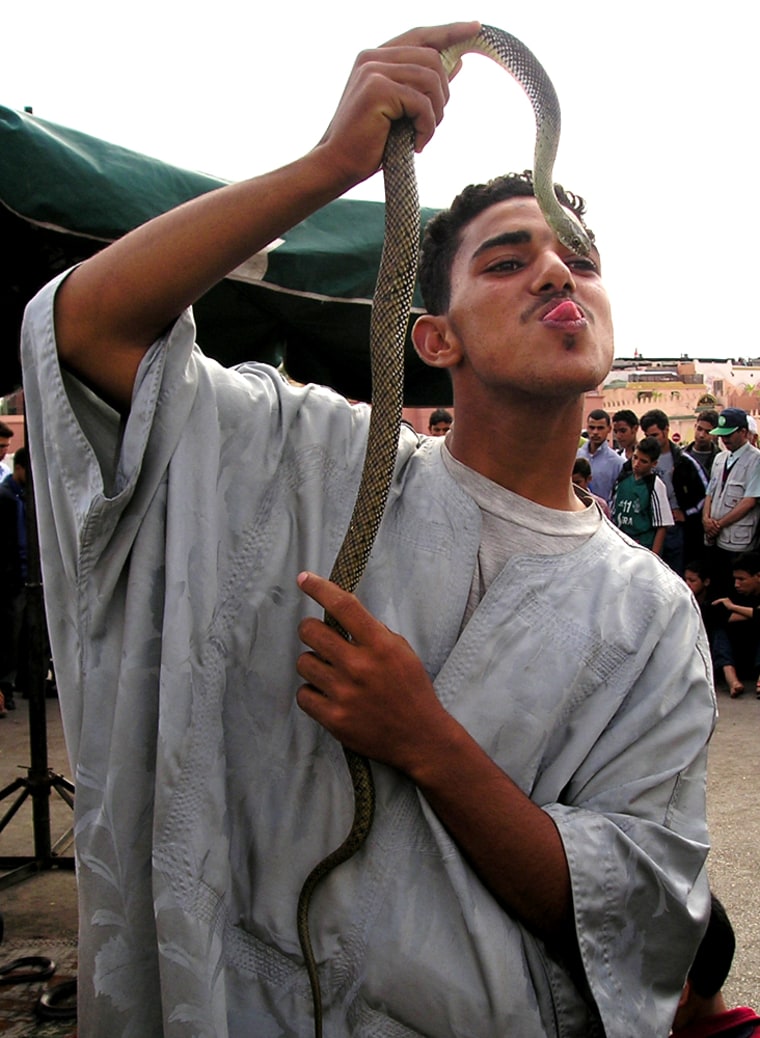When planning a foreign vacation most Americans would like to experience a different culture and learn about another peoples’ history, while living comfortably, eating good food, and sunbathing on faraway shores.
While few can afford to live it up with seafood dinners and horse-drawn carriage rides in Europe’s historic cities, the good life awaits the adventurous just across the Mediterranean.
In Morocco, budget travelers can get by on $25 a day without skipping any sites or meals, and for $50 to $100 a day the more refined can dine in palace-like quarters, learn to windsurf, and buy an array of quality souvenirs to take back to their jealous relatives.
Yet, there are risks. The U.S. State Department does advice caution when traveling to Morocco. The government's Web site notes a terrorist bombing in Casablanca in May 16, 2003 and says that other attacks have been thwarted in Morocco.
As a result, the State Department advises Americas to be vigilant and to maintain a low profile in the country. It warns, "The potential for violence against American interests and citizens remains high in Morocco."
A sensory experience
For those ready to take the chance, Morocco holds the key to a magical, yet inexpensive vacation.
For starters, head to Marrakech for a sensory experience that can’t be beat.
Surrounded by the High Atlas mountains in central Morocco, the city retains its medieval walls and evidence of an ancient way of life, while mixing Islam with a deep-rooted belief in magic.
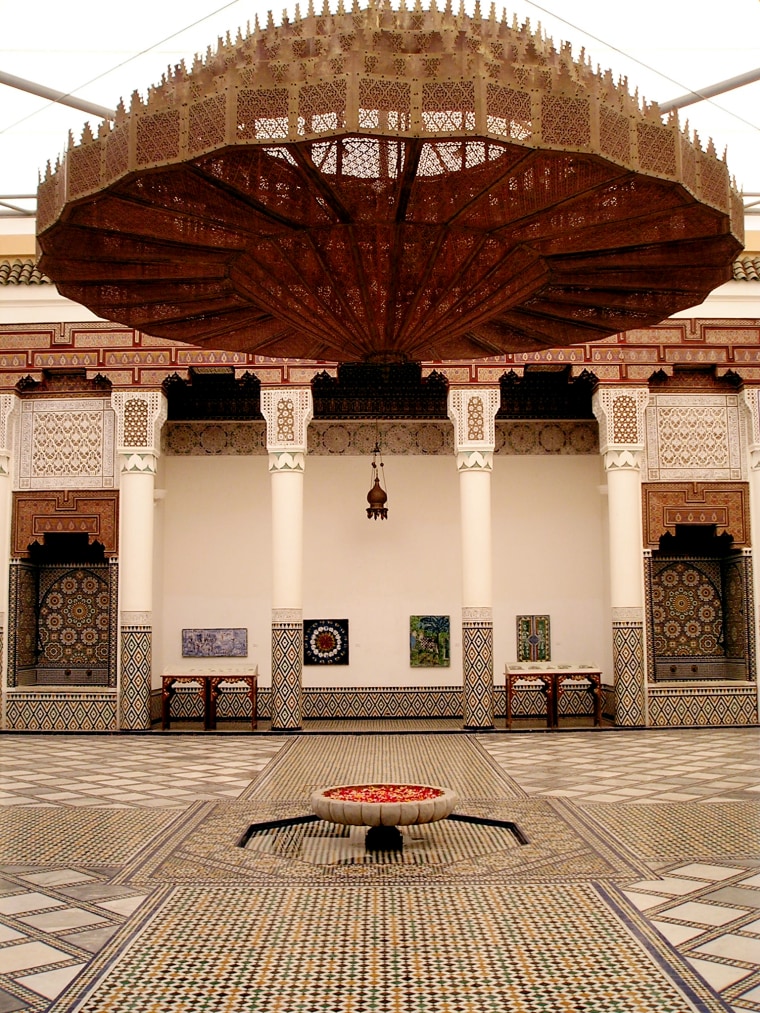
The life of the old city centers around Djemaa el-Fna, an open space straight out of "1001 Arabian Nights," where snake charmers, acrobats, fortune readers, story tellers, musicians and dancers congregate daily.
Stands selling freshly squeezed orange juice (2.5 dirham, or 28 cents a glass) and a variety of dried fruits and nuts crowd two sides of the plaza, while women offer henna tattoos and brightly clad water sellers ring bells to attract the attention of passersby.
At complete odds with its name, which roughly translates as “Assembly of the Dead,” the carnival of local Arab and Berber culture hums with color and vitality.
As the midday suns cools into early evening, dozens of food stalls equipped with grills, benches and lights are set up and serve delicious local specialties for around 25 dirham ($2.76) a meal. The most popular dishes are Harira (Moroccan vegetable soup), kebabs, couscous, and tagine (a tender stew of lamb, chicken, or beef).
A few other exotic platters, like boiled sheep heads and brains, may make better fodder for photos than meals. Strong, sweet mint tea (complimentary with a meal) or spiced cinnamon tea (1.5 dirham, or 17 cents, a glass) are usually in order once you’ve cleared your plate.
Maze of souqs
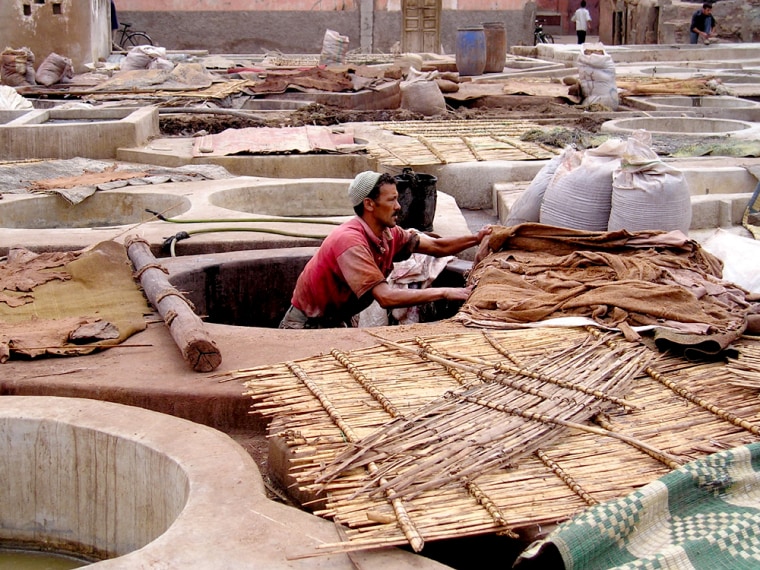
At the northern end of the square lies a winding maze of souqs (markets) where one can get lost amidst carpets, jewelry, spices, leather goods, babouches (leather slippers), lizards and bones used for herbal remedies, and animal-skin lamps designed with henna.
Leather from camels, cows, goats, and sheep are softened and dyed in tanneries hidden within the labyrinth of intertwined alleyways. Guides explain the process and the natural colors used to dye the leather: poppies for red, indigo for blue, saffron for yellow, wild mint for green etc.
When you’ve had enough of haggling and bartering in the souqs, the Ben Youssef Medersa, a theological college dating back to 1565, and the Museum of Marrakech, housed in a beautifully restored 19th century riad (town house with a central courtyard), offer respite at the northern end of the souqs.
Although non-Muslims are not allowed to enter mosques in Morocco, palaces and medersas present similar examples of Islamic architecture. And just listening to the five daily calls to prayer remind the visitor of the country’s pious lifestyle.
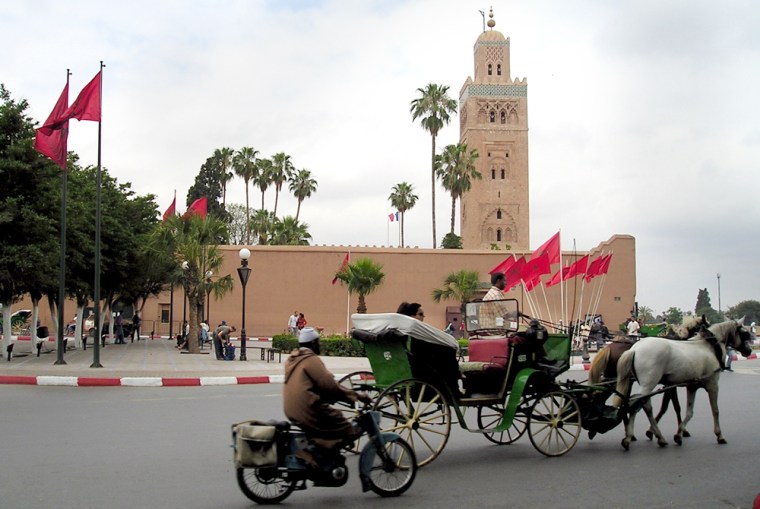
Even if you can’t go in, a trip to Marrakech wouldn’t be complete without a sunset stroll around the famed Koutoubia mosque, constructed nearly 900 years ago.
A legend told by the Berbers, the indigenous tribal people of the region, says that when the Koutoubia was planted in the city’s heart, it bled so heavily that the city turned red. As the sun drops behind the horizon, Marrakech's earthen ramparts, buildings, and houses turn a fiery crimson, rekindling the legend’s fervor.
Dusk is also a perfect time to climb into a horse-drawn-carriage for the six-mile circuit of the Old City walls — about 80 dirham ($8.80) for one hour.
Where you rest your head at night depends largely on your pocketbook, as Marrakech has something for everyone.
Many small hotels in the medina have intricately tiled courtyards, rooftop terraces, and offer clean, but very sparse, double rooms with shared bathroom facilities for as little as 80 dirham ($8.80) a night. On the other end of the spectrum, if you’re looking upmarket but don’t want to end up in a chain hotel in the new part of the city, rooms in riads converted into stylish guesthouses with cool courtyards and orange groves cost around 1000 dirham ($110) a night.
Desert sand dunes and coastal escapes
For an other-worldly experience, head into the Sahara desert. From Marrakech, three-day tours take visitors through mountains, gorges, passed green oases, and into the orange sand dunes where an overnight trek is carried out on camel-back (about 250 dirham, or $28, a day, including transportation, accommodation, and dinners).
But, if you prefer your sand by the sea, the coastal city of Essaouira is just three hours from Marrakech (35 dirham, or $3.85, by bus).
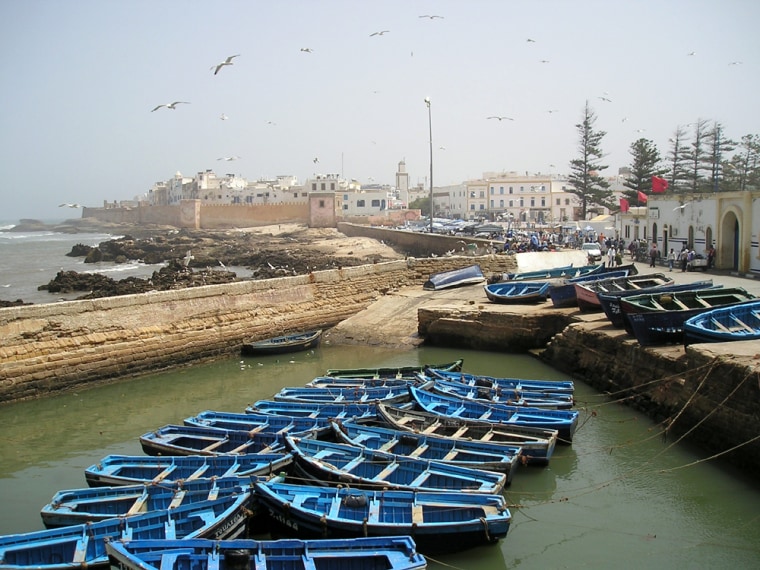
A great escape from the summer heat, the walled city retains its mix of Portuguese, French, and Berber fortifications that look out over the Atlantic Ocean and to the Island of Mogador, where falcons breed in summer.
Its white-washed houses with blue-painted doors suggest the Greek Island of Mykonos. And within the city’s narrow lanes artisans work in medieval-style sheds, with most fashioning boxes and souvenirs out of the fragrant local wood, called thuya.
Well known for its water sports, a two-hour windsurfing lesson, with board, wetsuit, a multilingual instructor, and a zodiac to lead you back to shore if you drift out too far, costs 400 dirham ($44) — far less than you’d pay in the United States or Europe.
Surfing is also popular at another section of the six-mile beach that stretches down the coastline from Essaouira.
After a morning of wind and waves, it’s time to hit the fresh fish stands. Once you’ve chosen from the catch of the day — crab, lobster, shrimp, squid, myriad fish — your meal is grilled before your eyes, and those of the eager gulls, and served with a generous salad and bottled water — all for between 25 and 60 dirham ($2.75 to $6.60), depending on your selection. Sardines, the local favorite, cost even less.
Evenings are usually spent in cafes overlooking the main square, Place Moulay Hassan, in restaurants, or with artisans who often invite tourists into their workshops to drink mint tea and listen to Gnawa music, a blend of Berber and Arabic music, with its roots in sub-Saharan Africa.
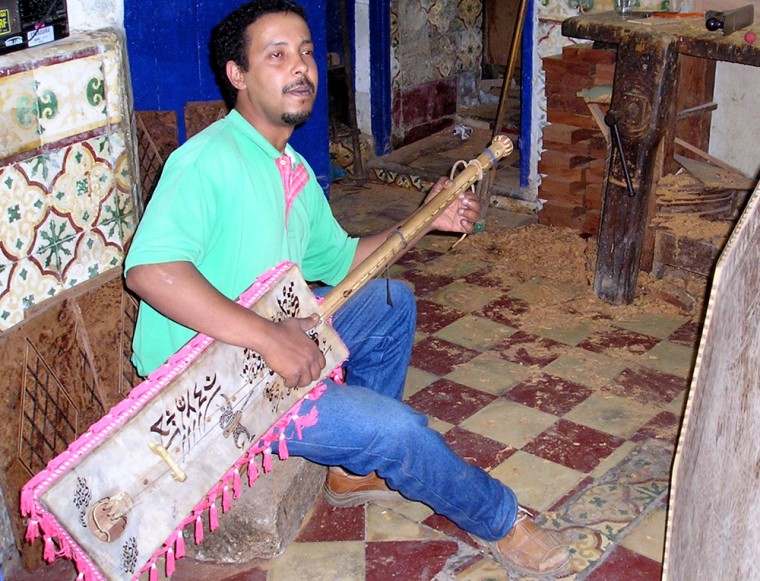
Instead of trying to sell their wares, artisans will often take the conversation in a spiritual direction, explaining which figure from the Quran they are named after or recounting religious stories.
But, since Judaism, Christianity, and Islam have their roots in the same monotheistic tradition, their accounts are not too difficult for even an atheist with an inkling of the Bible to follow. And such conversations are not meant to be contentious or political, but simply a means of getting to know one another.
Words of caution
While Morocco is a perfect destination for adventure seekers and budget travelers, it is not an ideal place for women to travel alone.
Western women, and Moroccans who chose not to wear the hijab (head scarf) are usually the target of incessant cat calls and hassling. Although attacks are not common in populated areas, the constant harassment can wear down even the most seasoned traveler. For a safer, more enjoyable trip, it is best for a woman traveling alone to hook up with a group or visit the country with a man who can at least feign to be her husband.
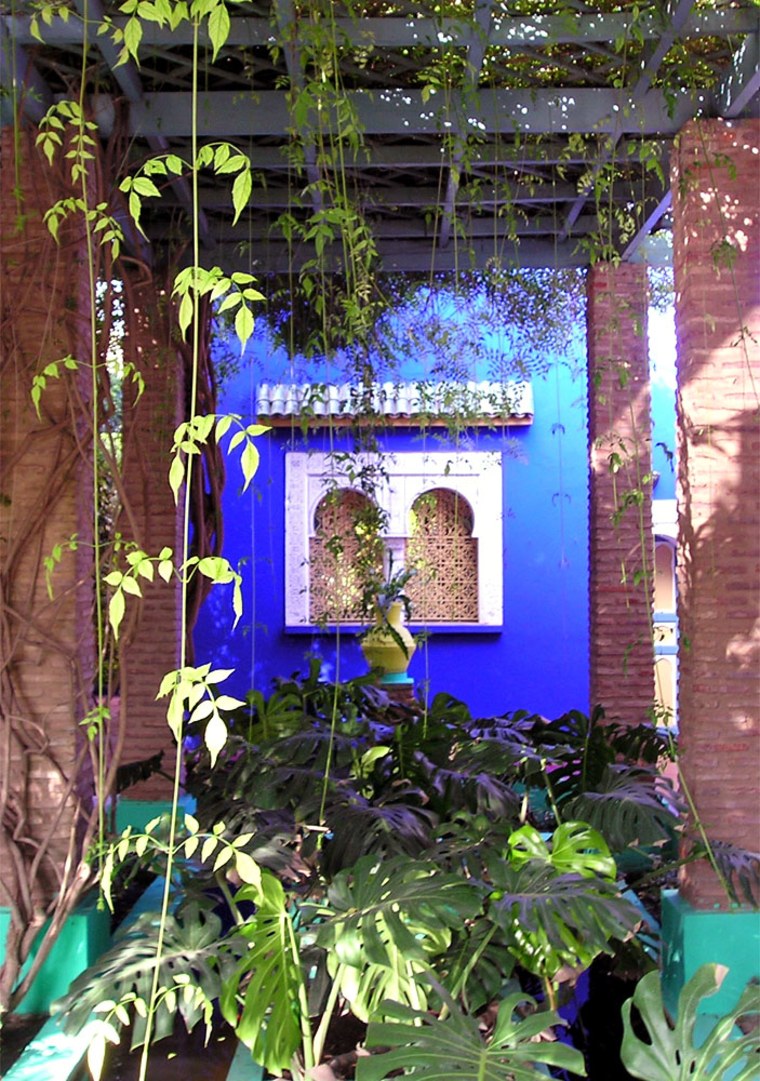
Haggling and forced tipping can also detract from a vacation — good bargaining skills and a firm disposition will come in handy. While most Moroccans who deal with tourists speak some English, a few French lessons can never hurt.
The site of disabled beggars and the sheer poverty some Moroccans live in can profoundly affect some Western tourists. But, it is interesting to note that giving alms is one of the five pillars of Islam, and the majority of Moroccans appear to donate at least a couple dirham to those in need.
While the war on terror has made many Americans fear their own big cities, let alone going abroad, those with curious souls and a bit of know-how can fulfill their dreams in this north African country.
